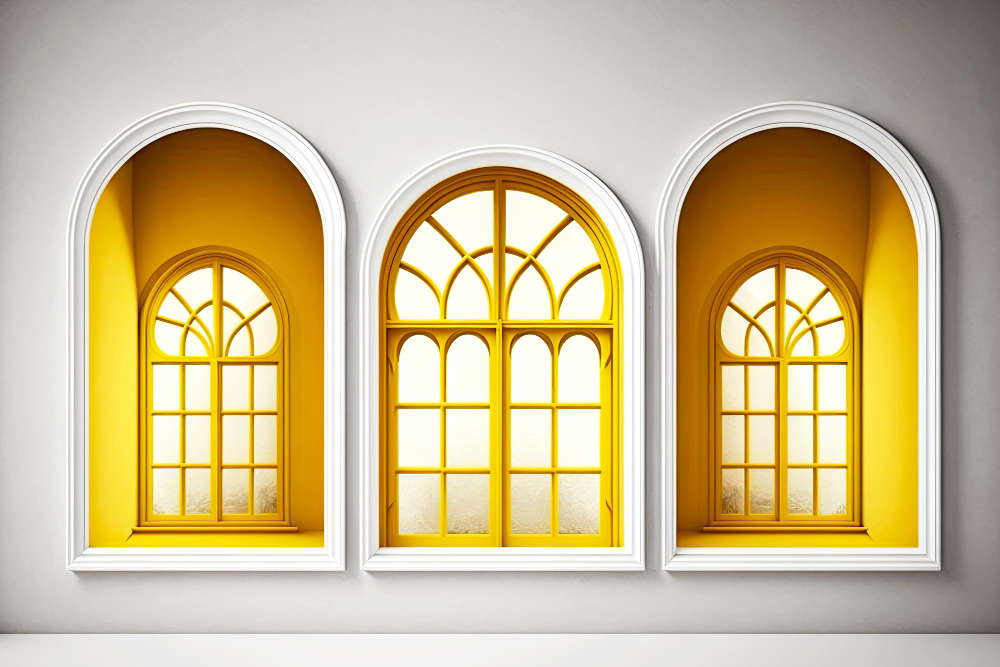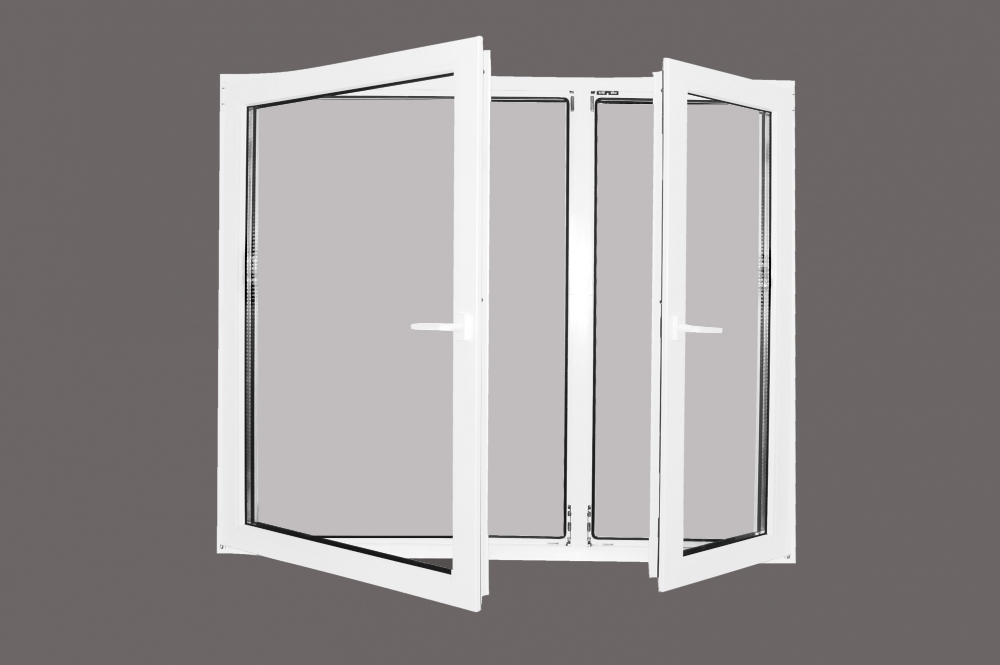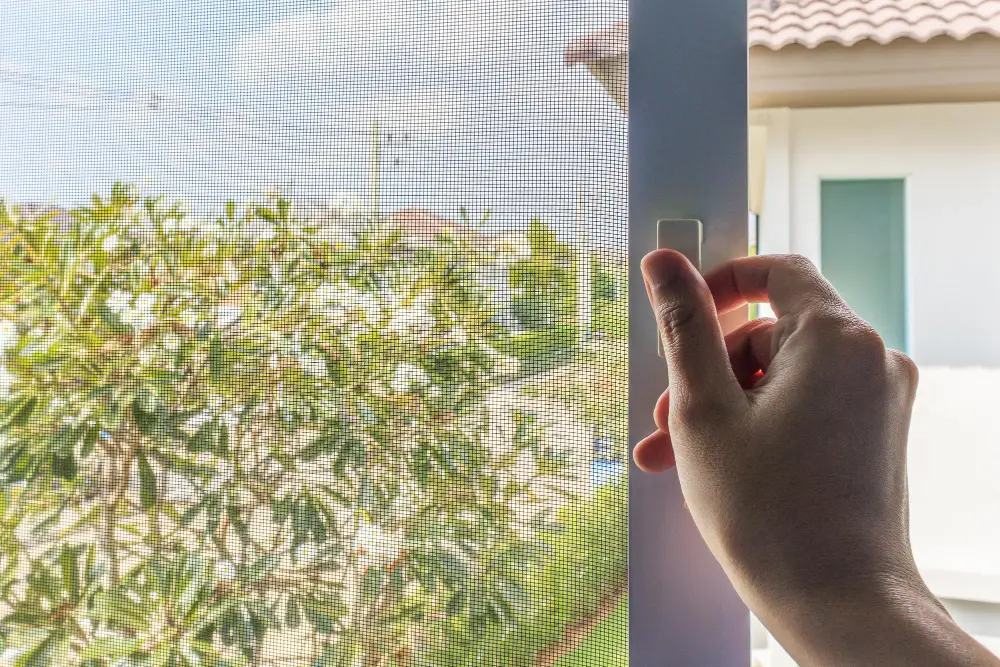Laminated Series

Tilt and turn windows
Tilt and turn windows are innovative and multifunctional window designs that offer versatility and practicality. These windows can be opened in two ways: they can be tilted inwards from the top for ventilation or turned inward from the side for a larger opening. The dual functionality provides flexibility in controlling airflow and access.
Constructed with various materials, including uPVC, tilt and turn windows are known for their modern aesthetic, energy efficiency, and ease of use. The tilting feature allows for secure ventilation without fully opening the window, making it suitable for homes where safety and security are priorities. When fully opened inward, tilt and turn windows provide easy access for cleaning and can serve as emergency exits.
Arch Windows
Arch windows, also known as arched windows or radius windows, are distinctive and elegant architectural elements characterized by their curved or arched tops. These windows add a touch of sophistication and visual interest to a building’s facade. The curvature at the top can take various forms, including half-circle, elliptical, or Gothic arch shapes, depending on the architectural style.
Arch windows are often used as decorative features or focal points in both traditional and modern designs. They may be fixed or operable, and the frames can be made from various materials, such as wood, metal, or uPVC. While fixed arch windows are primarily used for aesthetic purposes, operable ones can provide ventilation and natural light.
These windows are versatile and can be found in a range of architectural styles, including Gothic, Romanesque, and contemporary designs.


Parallel window
Parallel windows, often referred to as horizontal sliding windows or sliders, are a common and practical window style characterized by sashes that move horizontally along a track. Unlike traditional single-hung or double-hung windows that open vertically, parallel windows provide a sleek and space-efficient design.
TThese windows are commonly used in modern architectural designs, offering a contemporary aesthetic while maintaining functionality.
Parallel windows come in various materials, including aluminum, wood, and uPVC, providing options to suit different preferences and architectural styles. Their simplicity, ease of use, and versatility make parallel windows a popular choice for residential and commercial spaces, particularly in areas where a sliding design is preferred over traditional vertical openings.
Combination windows both in sliding
Combination windows that incorporate both sliding elements offer a versatile and adaptable solution for various architectural and design needs. These windows combine the benefits of sliding and fixed elements within a single frame, providing a customizable and functional option for homeowners and builders.
The combination may include sliding windows paired with fixed panels or other types of operable windows. This design allows for a mix of ventilation options and unobstructed views while maintaining a cohesive and aesthetically pleasing appearance. The sliding components contribute to ease of use and space efficiency, making them suitable for areas with limited exterior clearance.
Materials such as uPVC, aluminum, or wood can be used for the construction of combination windows, offering durability, energy efficiency, and design flexibility. The variety in configurations allows for customization to match specific preferences, architectural styles, and practical requirements. Overall, combination windows with sliding elements provide a balance between functionality and design versatility in both residential and commercial applications.


Casement windows
Casement windows are a popular and classic window style known for their simplicity, functionality, and timeless appeal. These windows are hinged on one side and open outward like a door, typically operated with a hand crank. Casement windows provide a wide, unobstructed view of the outdoors when open, and their design allows for excellent ventilation by capturing breezes from multiple directions.
The hinged mechanism of casement windows also makes them easy to clean and maintain. When closed, the sash presses against the frame, creating a tight seal that enhances energy efficiency and helps to prevent drafts. This feature makes casement windows suitable for various climates.
Casement windows are available in different materials, including wood, aluminum, and uPVC, offering options to match various architectural styles and preferences. Whether used individually or combined to create larger window configurations, casement windows contribute to both the aesthetic and functional aspects of a home or building. Their versatility and practicality make them a popular choice in a wide range of residential and commercial applications.
Sliding window with mosquito net windows
Sliding windows with mosquito nets are innovative window solutions designed to combine ease of use, ventilation, and protection against insects. These windows typically feature a sliding mechanism that allows for smooth horizontal movement along tracks, making them convenient and space-efficient.
The integrated mosquito net serves as a barrier to keep insects, such as mosquitoes and flies, out of the living space while still allowing fresh air to circulate. The netting is often made of fine mesh that provides effective protection without obstructing the view or impeding airflow.
These windows are particularly popular in regions where insect-borne diseases are a concern or where the presence of insects can be bothersome. The combination of sliding functionality and a built-in mosquito net makes these windows a practical choice for bedrooms, living rooms, and other areas where comfort and ventilation are priorities.

